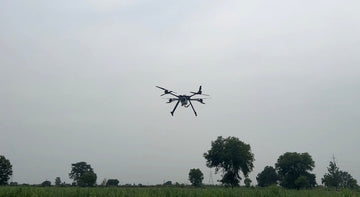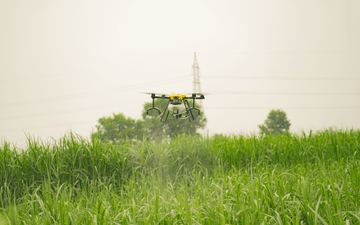In modern warfare, advanced drone technology has significantly transformed battlefield dynamics. A revolutionary breakthrough in this field is the optical fibre drum, resulting in the advent of the "fibre drone." Drone Anatomy, an industry leader in drone innovation, is pioneering this transformative technology.
What is an Optical Fibre Drum?
An optical fibre drum is a compact spool containing extensive lengths of optical fibre cable, typically less than 0.3 mm thick. Mounted on drones, these drums release fibre-optic cables during flight, maintaining a continuous high-speed communication link between drones and ground control stations. This tether ensures exceptional communication security, resistant to jamming and interception.
Benefits of Fibre-Optic Communication in Warfare
- Secure, Jam-Proof Communication: Immune to electronic warfare disruptions.
- High-Speed, Low-Latency Data Transmission: Real-time HD video streaming and critical data relay.
- Enhanced Stealth: Minimal electronic signature reduces detection risks.
- Extended Mission Endurance: Continuous power through ground-based tethers, surpassing battery limitations.
Drone Anatomy: Leading Fibre Drone Technology
Drone Anatomy is actively advancing fibre drone technology, integrating robust optical fibre drums with state-of-the-art UAV systems. Equipped with advanced autopilots, Drone Anatomy’s drones handle high data throughput efficiently, positioning the company at the forefront of secure drone communications.
Real-World Warfare Applications
Fibre drones have notably proven their effectiveness in the Ukraine-Russia conflict, maintaining secure real-time video feeds crucial for reconnaissance and precision targeting amidst intense electronic warfare.
Future Trends in Fibre Drone Technology
- Advanced Fibre Cables: Developing lighter, stronger cables.
- Autonomous Tether Management: Automating cable management to improve operational efficiency.
- Networked Swarms: Utilizing multiple drones to form secure aerial communication networks.
- Civilian Applications: Infrastructure inspection, disaster response, and border patrol.
Comparative Overview: Fibre Drones vs Conventional Drones
| Feature | Fibre Drone | Conventional Wireless Drone |
|---|---|---|
| Communication Security | Jam-proof, secure optical link | Susceptible to jamming/interception |
| Data Transmission | Real-time, high-speed HD streams | Limited, compressed streams |
| Endurance | Extended via tethered power | Limited by battery capacity |
| Detection Risk | Low (minimal RF signature) | High (radio emissions) |
| Operational Range | Limited by fibre length | Extended but prone to interference |
Conclusion
The integration of optical fibre drums into drone technology marks a significant advancement in warfare capabilities. Drone Anatomy’s ongoing innovations are setting new standards in aerial communication security, ensuring fibre drones will play a pivotal role in shaping future military strategies.
```





